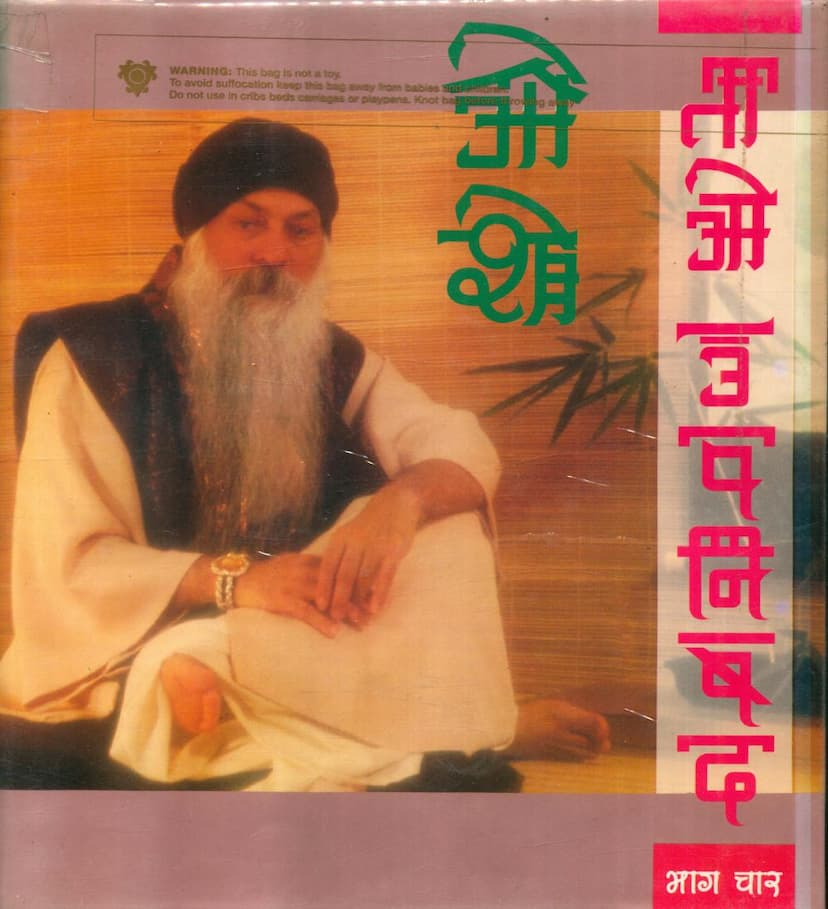Tao Upnishad Part 04
Added to library: September 2, 2025

Summary
The Jain text you provided is titled "Tao Upnishad Part 04," authored by Osho Rajnish and published by Rebel Publishing House Puna. It is a compilation of discourses on Lao Tzu's "Tao Te Ching." The catalog link provided is https://jainqq.org/explore/002374/1.
This summary focuses on the key themes and ideas presented across the provided pages, particularly drawing from the introductory sections and chapter summaries that offer context to Osho's interpretation of Lao Tzu's teachings.
Overall Theme:
The "Tao Upnishad Part 04" is a collection of Osho's discourses on the Taoist philosophy as presented in Lao Tzu's "Tao Te Ching." Osho interprets Lao Tzu's teachings through a spiritual and existential lens, emphasizing the concept of "Tao" as a fundamental principle of existence that transcends names and forms. The central idea revolves around understanding and living in accordance with this natural, spontaneous flow of the universe, which Lao Tzu called Tao.
Key Concepts and Themes:
- Tao as the Way, Not a Destination: Osho emphasizes that Tao is not a goal to be reached but the very process of living. The path itself is the Tao, and every moment is the destination. Those who use each moment as a stepping stone are described as "utilitarian," while those who live each moment as the ultimate goal are "celebratory."
- The Nature of Tao: Tao is described as absolute and without a name. It is the fundamental essence from which all existence arises and to which it returns. Names and labels, according to Lao Tzu and Osho's interpretation, limit and distort the understanding of this ultimate reality. Tao is compared to rivers flowing into the sea, where individual identities are dissolved into the vast ocean of existence.
- The Importance of Simplicity and Naturalness (Wu Wei): Osho highlights Lao Tzu's emphasis on "wu wei" (non-action or effortless action). This doesn't mean inaction but acting in harmony with the natural flow of life, without forceful effort or ego-driven intentions. True action arises spontaneously from one's core being, not from external imposition of rules or desires.
- The Destructibility of Lao Tzu's Tradition: Osho points out that Lao Tzu's teachings and tradition were nearly destroyed in China due to political and ideological conflicts, particularly with Confucianism and later with Communism. He saw his discourses as an effort to preserve and revive this profound wisdom for the benefit of humanity.
- India's Capacity to Understand Tao: Osho suggests that India is uniquely suited to understand and integrate Taoist principles like "akarma" (non-action) and "nisarg" or "swabhav" (naturalness). He believes that India's ancient philosophical heritage, particularly the Upanishads, resonates with Lao Tzu's ideas, providing a fertile ground for their resurgence.
- The Paradoxical Nature of Tao: Lao Tzu's sayings often appear paradoxical, highlighting that what seems weak is strong, what seems empty is full, and what is soft can overcome the hardest. Osho explains these paradoxes as pointing to a deeper, non-dualistic understanding of reality. For instance, "Superior character appears like a hollow valley" signifies that true virtue is unassuming and natural, not ostentatious or ego-driven.
- The Role of Osho in Interpreting Lao Tzu: The introduction highlights Osho's role in bringing Lao Tzu to contemporary relevance. Osho is credited with illuminating Lao Tzu's profound and often obscure sayings, making them accessible and relatable to modern seekers. He is seen as the one who "brought Lao Tzu into his court and seated him on the highest throne."
- The Inclusion of Q&A: The compilation includes question-and-answer sessions, which Osho uses as a method to address the practical and existential queries of the audience, bridging the gap between profound spiritual truths and everyday life. He emphasizes understanding the process of inquiry rather than just memorizing answers.
- The "Uncarved Block" Analogy: The text mentions the "uncarved wood" (or "uncarved block") as a metaphor for the primordial state of Tao – simple, natural, and unspoiled by human artifice or desire for control. Keeping this "uncarved nature" is key to the world yielding to one's leadership.
- The Interconnectedness of Existence: The discourses touch upon the interconnectedness of all things, where even seemingly opposite forces like yin and yang are presented as complementary aspects of the same underlying reality. This interconnectedness suggests a cosmic rhythm and balance.
- The Nature of True Strength and Character: True strength lies in self-mastery and inner stillness, not in external power or forceful action. Superior character is not conscious of itself; it is natural and spontaneous.
- The Non-Utility of the Ultimate: Osho, through Lao Tzu, suggests that the ultimate reality (Tao) is beyond utility. Its value is inherent, not derived from its usefulness. The beauty of a flower or the vastness of the sea are not for any practical purpose; their existence is their purpose.
In essence, "Tao Upnishad Part 04" by Osho is a profound exploration of Lao Tzu's wisdom, presenting Tao not as a religious dogma but as a way of living – a path of naturalness, simplicity, effortless action, and deep inner peace, accessible to all who are willing to look beyond names, forms, and societal conditioning.